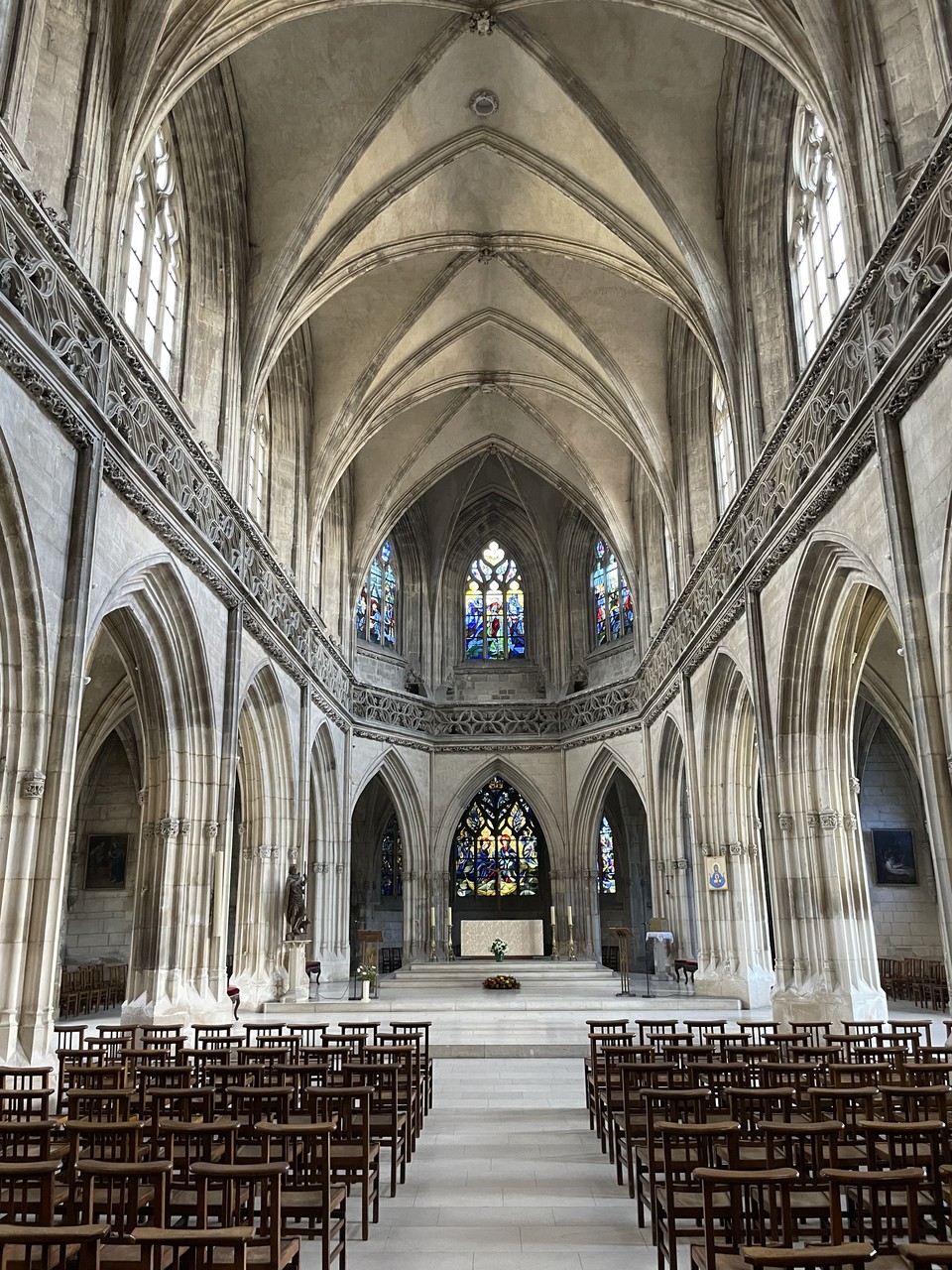The church was first constructed in the 14th century, and further work continued in the 16th century. The church was never fully completed; hence, when you look at the spires, they are not present.
The church was built on marshland in this area. Added to the fact that the ground is marl. This is a clay, limestone, and sand, meaning that it is soft. When you look at the front of the church, you can see the subsidence and lean of the tower. This was not caused by the bombings of the city.
Following the Allied bombings of the city of Caen between 6 June and 7 July 1944, the church sustained a significant amount of damage. It was not destroyed, unlike all the surrounding buildings that would eventually be cleared.
When the reconstruction commenced, Rue Saint-Jean was routed so that from the front of the church, Chateau Caen can be viewed and vice versa. The church needed extensive support to be put in place due to the sinking; this meant pillars 15-18 metres deep were driven under the church to stabilise it.
Many of the churches around the city of Caen would become a place of refuge for the residents. Whether sheltering from bombings in the crypts or seeking humanitarian aid due to the loss of houses. Each church has its own story to tell from a civilian perspective.
Within the church are numerous display panels which catalogue the bombings of Caen and the rebuilding of the church. This can be viewed during church opening hours and is free to access.
